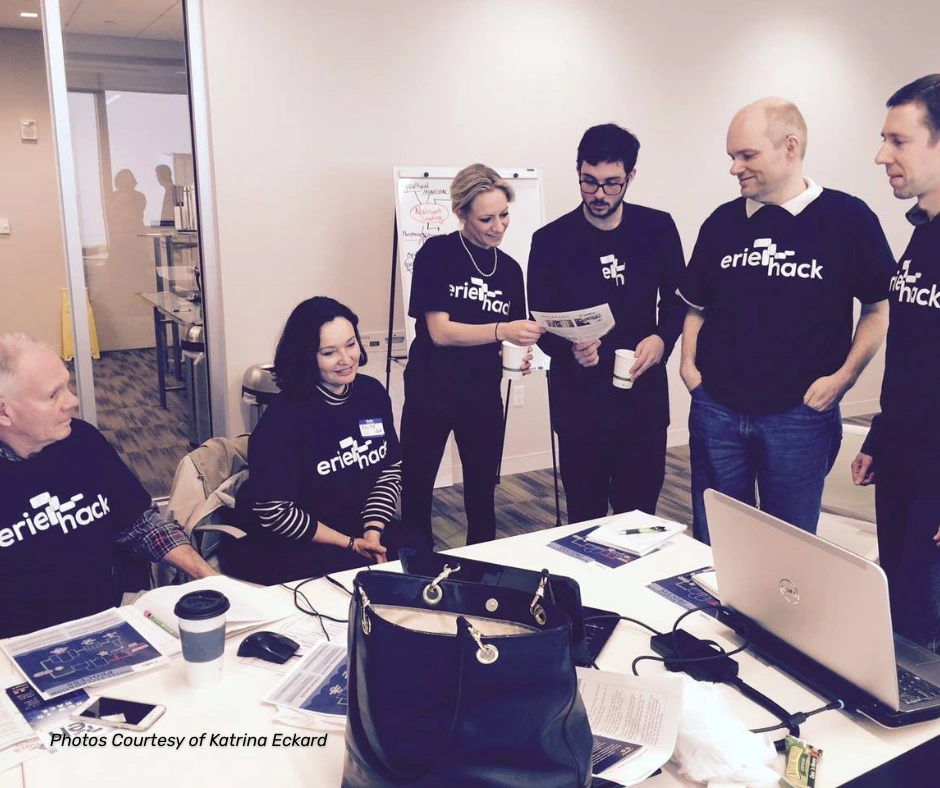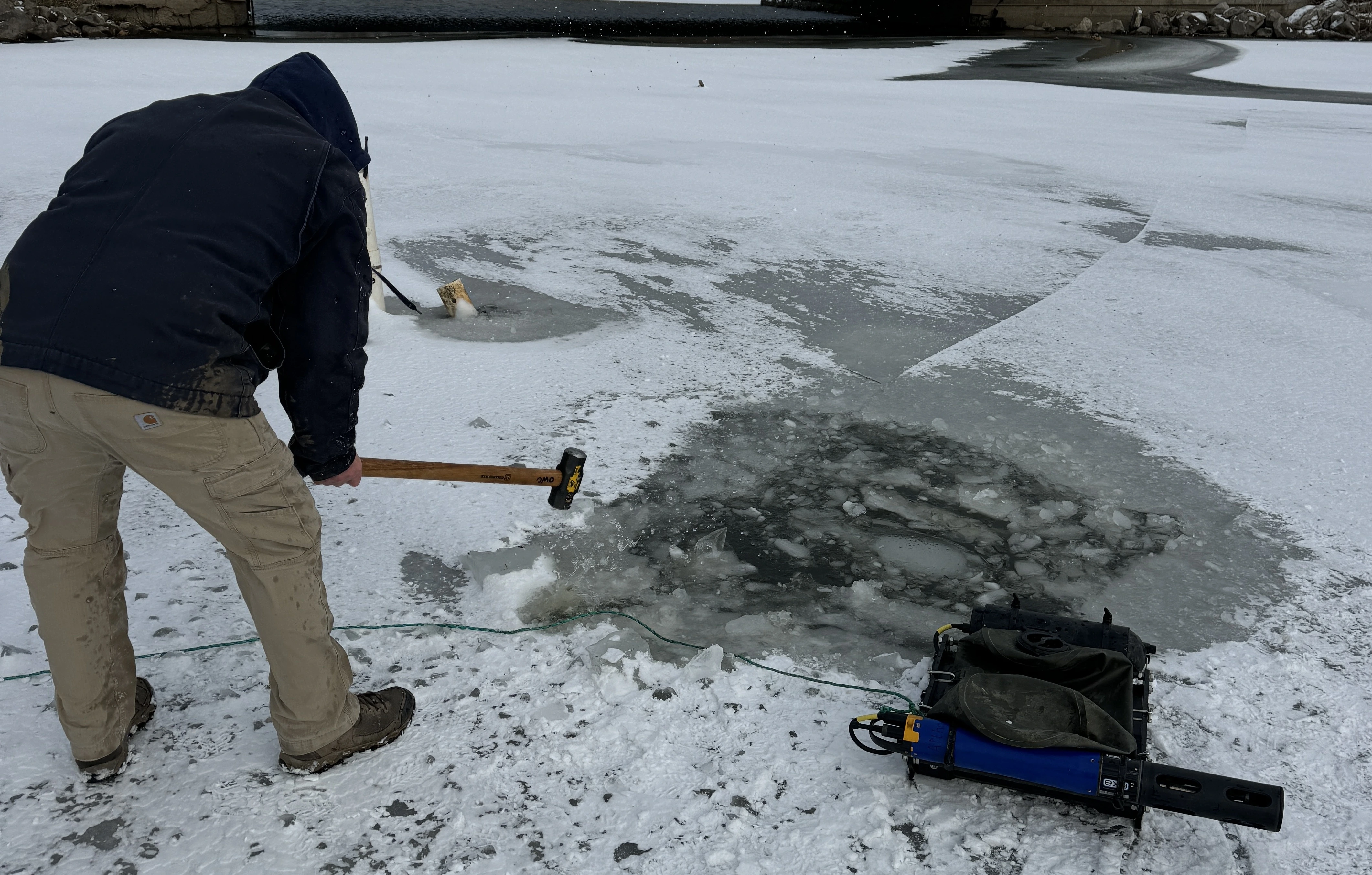Katrina Eckard, a former Erie Hack participant, has created a successful water reclamation system. Thanks to CWA's connections and mentorship, she was able to develop her solution from a prototype to a full-scale commercial product. Her zero-discharge technology is now scaled through AGES and deployed for critical water needs.
Listen to this article
Most people see wastewater as a costly problem. Katrina Eckard saw it as an untapped resource, and built a career and a system to prove it. When she entered Cleveland Water Alliance’s (CWA) Erie Hack innovation challenge, she brought forward an idea to reclaim wastewater and transform it into safe, drinkable water. What began as a prototype has since evolved into a full-scale system being used in breweries, cities, and even disaster relief scenarios, and it all started with the ecosystem and connections she built through Erie Hack.
What is Erie Hack?
Erie Hack was a multi-month innovation challenge that brought together tech, creatives, and entrepreneurs from across the Great Lakes region. The program was a collaboration between CWA and partners in cities like Buffalo and Detroit, that aimed to generate technology solutions for Lake Erie's greatest challenges, such as water quality and infrastructure.
For many participants, it was more than a competition—it was a launchpad. Teams worked with mentors, refined their ideas, and built connections across sectors that often lasted well beyond the event itself.
Connecting Ideas and Expertise
Katrina brought her innovative technology to Erie Hack with a working prototype already created. As an early-stage entrepreneur, she saw the competition as an opportunity to pressure-test her ideas, refine her business plan, and get valuable feedback from experts. It also offered her a chance to join a community of innovators tackling water and waste challenges across the region.
“It was a great experience. I met a lot of really similar technology innovators in the same space of water and waste issues,” Eckard shared. “I’m still in touch with a few of the people, and we all work together.”
Those connections didn’t just expand her professional network, they helped accelerate her technology from concept to real-world application.
CWA’s Support
The connections and mentorship provided through Erie Hack were crucial for accelerating Katrina's business and technology. This helped her move beyond the technical proof-of-concept to build a sustainable commercial strategy.
Katrina recalled that CWA’s Deputy Director of Programs and Partnerships, Max Herzog, provided direct guidance that helped her refine the business plan surrounding her technology.
Beyond strategic planning, the competition also facilitated connections across specialized expertise that helped Katrina advance her solution. One of her teammates, who specialized in simulation software, provided a crucial missing piece for her system’s efficiency. Katrina stated that, “He really helped me grasp that piece of the puzzle that I needed to efficiently get these systems up and running.”
Reflecting on the competition, Katrina shared that, “Erie Hack gave me the first experience to really identify the people, parts, and pieces needed to make any innovation a true success.”
Building on Success
Following Erie Hack, Katrina's work continued to rapidly develop, leading to a patent-pending status for her systems. Her first major milestone was building a prototype for the brewery industry, where her unit demonstrated the ability to take the industry's wastewater and reclaim it into drinkable water in less than 30 seconds.
This proved the core competitive advantages of her innovation: it's a closed-loop system that operates entirely mechanically. Katrina describes its unique selling proposition: “We're not creating another waste stream by purification or recycling in our process. So, a good phrase would be a zero discharge system.” This ability to recover not just water but also solids and chemicals, all without chemical treatment, set it apart.
Her success led to further pilot programs in diverse industries, including oil and gas, and eventually the construction of her first full-scale model at the Metropolitan Sewer District of Greater Cincinnati.
Advancing the Solution
Today, Katrina has successfully transferred her life's work to a larger company, Applied Geology and Environmental Science (AGES), where she now heads the division built around her technology. This synergistic move provides the support and resources to scale her innovation. She and her team are currently focused on applying this reclamation process to critical new areas, developing emergency water units for supplies in natural disaster scenarios and creating residential and community purification systems to address critical water quality issues across the country. Furthermore, Katrina is actively working on a multitude of new patents, and plans to apply for them soon.
Accelerating Innovation for Global Impact
For Katrina, accelerating innovation in the water space is key to enriching both business and public health. This requires getting technologies into a collaborative environment, and she believes that innovation challenges like Erie Hack are vital for this process.
“I think a big role is that you bring technologies together, you bring teams and awareness together,” she shared. “When you can bring all those technologies into a space together, we can really create a bigger picture that accomplishes a very big goal.” By creating this shared space, CWA helps innovators focus on building larger, integrated systems of solutions for global freshwater problems.
Katrina Eckard’s journey is a prime example of how Cleveland Water Alliance serves as a launchpad for innovators. By providing the connections, mentorship, and support needed to succeed, CWA continues to accelerate innovative solutions that drive economic growth and protect our water resources.
About the Rising Tide Series
CWA’s Rising Tide spotlights how our network and partners are fostering workforce development in the Great Lakes region.

.webp)

.webp)
.webp)
.webp)

.svg)







